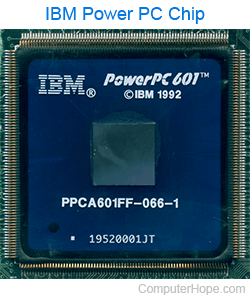PowerPC

Also known as PPC, and short for Performance Optimization With Enhanced RISC Performance Computing, PowerPC is a type of microprocessor architecture. It was developed collaboratively by Apple, IBM, and Motorola (formerly known as the AIM alliance) and introduced in 1991. A RISC (reduced instruction set computing) instruction set architecture, PowerPC was first implemented in the Apple Power Mac in 1994.
One notable aspect of PowerPC architecture is its endianness, which refers to the order that bytes of data are stored in memory. PowerPC can support big-endian and little-endian modes, offering flexibility for different types of applications and data storage formats.
PowerPC history
The PowerPC architecture was initially created as an alternative to Intel's x86, which was commonly used in personal computers at the time. PowerPC processors were designed to offer better performance and power efficiency for various computing tasks. Their applications ranged from personal computers to servers and embedded systems. PowerPC processors were found in many IBM and Apple Mac products, and gaming consoles like the Sony PlayStation 3, Microsoft Xbox 360, and Nintendo Wii.
While PowerPC processors are not as prevalent today, they still find use in specialized fields such as embedded systems, high-performance computing, and certain networking equipment. For example, the Amiga line still utilizes PowerPC CPUs (central processing units). In 2006, the name "PowerPC" was changed to Power ISA.
In 2019, IBM released PowerPC to the Linux Foundation, making it open source for everyone.
